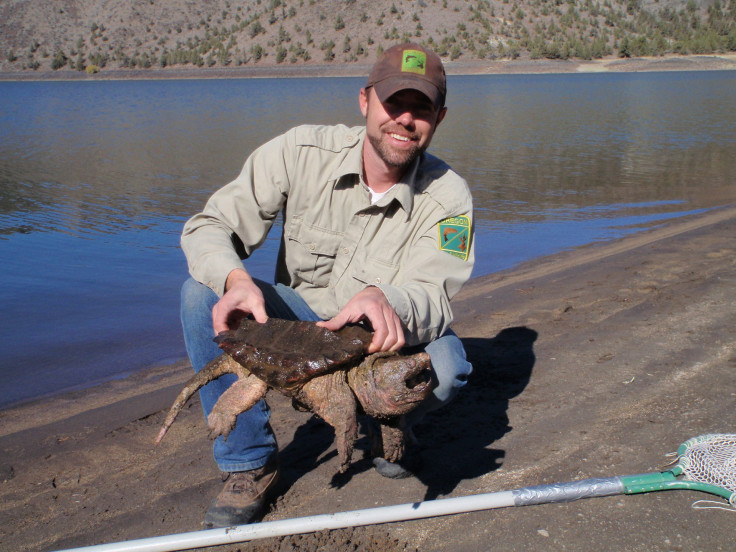Alligator Snapping Turtle Caught In Oregon, Found In Prineville Reservoir [PHOTO]

An alligator snapping turtle, a large freshwater turtle known for its spiked shell, beaklike jaws and thick, scaled tail, was pulled from Oregon’s Prineville Reservoir last week.
Considered the first wild alligator snapping turtle ever found in Eastern Oregon, the reptile was spotted by a fisherman, according to the Oregon Department of Fish and Wildlife. As it was an "invasive species" posing a threat to native turtles, it was caught and killed by local wildlife officials.
“We euthanized it as soon as we got it back to the office,” Greg Jackle, a district biologist in Prineville, told the Statesman Journal. “It’s obviously a very large turtle that was not something that we’ve ever seen over here before.”
The alligator snapping turtle was most likely released after being kept as a pet, the ODFW speculates. “People get these turtles when they are small and release them when they get too big and aggressive to keep as pets,” Simon Wray, an ODFW Conservation Biologist, said in a statement. “It’s a poor choice for a pet and the environment.”
Alligator snapping turtles, one of the largest freshwater turtles in North America, are often referred to as the “dinosaur of the turtle world.” While the species is native to southeast Oregon, the ODFW says the reptiles are considered an invasive species. They compete with native turtles for food, nesting and habitat, and carry parasites that native turtles are not immune to.
“I’d hate to see these turtles get established in Oregon," Rick Boatner, ODFW Invasive Species Coordinator, told KVAL. "We already have problems in the Willamette Valley with common snapping turtles.”
The turtles, which have been known to exceed 220 pounds, have an unusual way of luring their prey. Their bright red tongues resemble worms, and when they're displayed while the turtle remains motionless on a river bed, they can trick curious fish and frogs to swim near before being snatched, National Geographic explains. The turtle's powerful bite poses a safety hazard to people.
The recently caught turtle will be part of an educational display on non-native invasive species, Jackle said, adding that biologists are unsure if the snapping turtle would have been able to survive the winter in the reservoir.
© Copyright IBTimes 2024. All rights reserved.




















